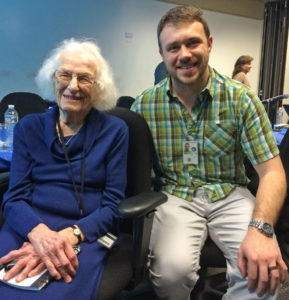Nancy Grace Roman, who died at age 93 on December 25, 2018, was widely regarded as the “Mother” of the Hubble Space Telescope. She became one of the first division chiefs at NASA soon after it started up in 1958, and was tasked with “formulating a program from scratch” as chief of Astronomy and Relativity Programs. Roman’s work entailed coordinating astronomers and engineers to put satellites and observational instruments outside Earth’s atmosphere. For example, Roman oversaw the launch of the first Orbiting Solar Observatory in 1962, which included instruments to measure ultraviolet, x-rays and gamma rays, which are largely veiled by Earth’s atmosphere. She also oversaw satellites that helped map the earth.
The Hubble Space Telescope, launched in 1990, was made possible by Roman’s long career of planning and advocating on behalf of the mission. She made the analogy that the cost of Hubble would be no more than buying a movie ticket for every American, which helped convince Congress to approve the project. Hubble enabled an incredible jump forward in the science of astronomy, making observations possible that could never have been made before, including investigations of exoplanets and dark energy.
When asked about a favorite moment in her career, Roman described how she “discovered something important that no one had ever suspected. Upon careful inspection of low dispersion spectra of bright stars similar to the sun, I noticed that compared to the strength of the hydrogen lines, the strengths of the lines of other elements varied from star to star…. This was the first indication that common stars were not all the same age.” (https://solarsystem.nasa.gov/people/225/nancy-roman/)
Read more of this story in the January 10 News Review.


